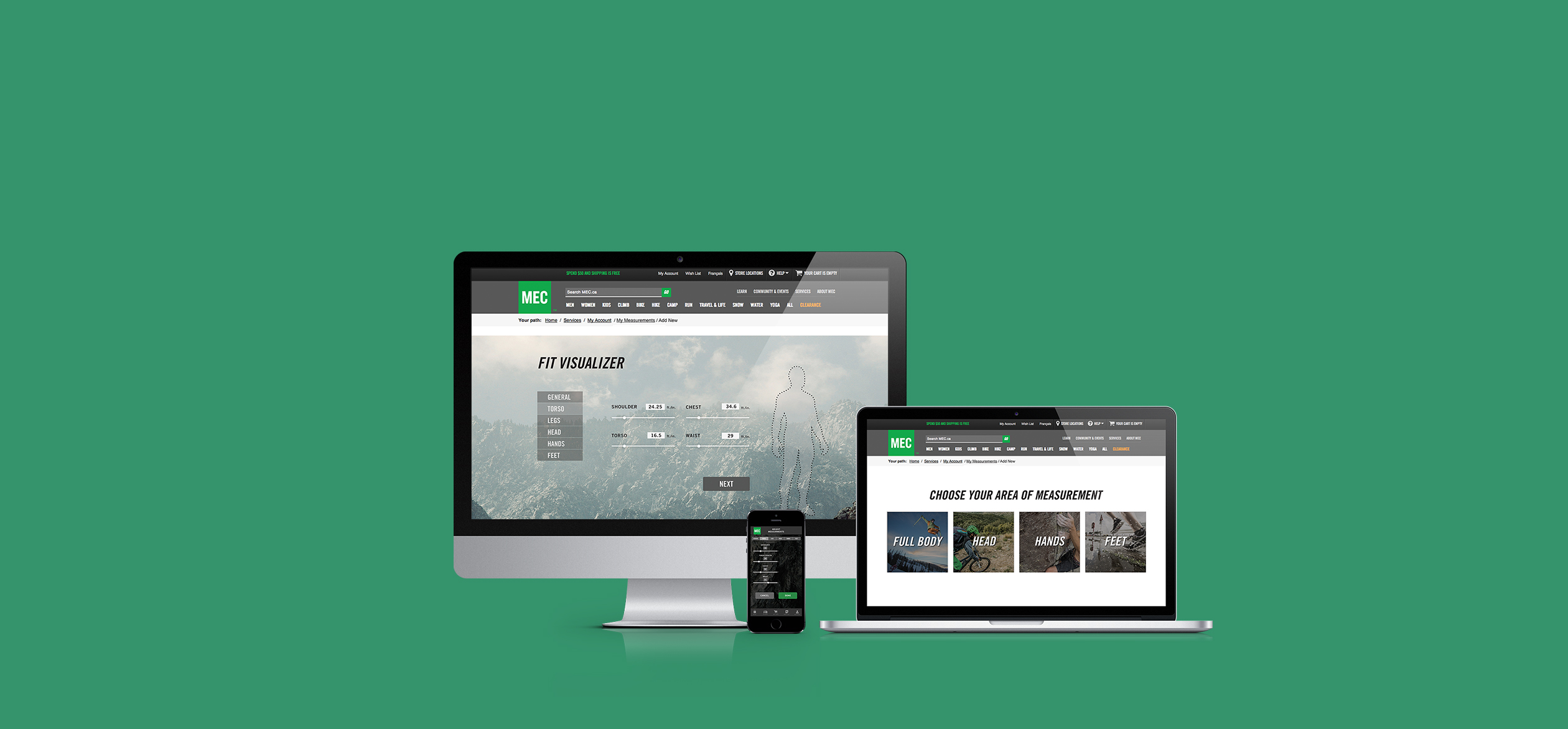Role
Strategy, concept, UX design, copy writing
Duration
4 weeks
Team
AJ Panghulan, Maheen Sohail, Kimberly Chan, Amanda Poh, Brianna Lee
Research
In my initial research I identified major problems on both a sector wide and business specific level when it came to purchasing clothing, especially sportswear, online.
Brand Values
- Authentic
- Enthusiastic
- Aspirational
- Vibrant
Insights to ideas
Opening
Providing reassurance through expert advice
The Idea
A digital experience that integrates into the existing MEC website and mobile app that provides accurate size suggestions based on your specific measurements, and provides visualization of how each size will fit. Information about how fit relates to intended activity is integrated into the visualization, and there is the opportunity to compare the fit of different brands to help members make the most informed decision possible. Scanning products in-store brings up relevant product information and helpful tools to comparison shop, and locate the item.
Stakeholders
Different experience levels meant structuring information in a way that was easily accessible to those with less experience but not obtrusive to the more experienced crowd.
The Lifestyler
Rarely ventures outside of the city. Often the least versed on the specifics of their gear and relies on the expertise of MEC staff.
The Day Trekker
Casual advenurer on weekends and holidays. Often seeks out the knowledge of the staff to increase their own expertise.
The Extreme Enthusiast
Intimate knowledge of their gear. Particular and picky, they want to ensure the best performance possible.
The Prototype
I mapped out the feature requirements and user flows for the fit assistant, taking into account both first time users, and returning users of different expertise levels
Chunking
Customers can enter their measurements manually, or take a picture to have them calculated automatically. To make the process more manageable it can be broken down into individual body parts.
Take a Picture
Take a photo holding a credit card to automatically calculate your measurements. An outline on the screen indicates the optimal pose. Icons in the top corner show the different poses you'll need to photograph.
Review your Measurements
Review your measurements and make adjustments as necessary. Your measurements are portrayed by a simple outline to avoid alienation caused by more lifelike portrayals which can stop you from effectively visualizing yourself, or just come off as outright uncanny valley creepy.
Browse Products
When you apply your measurements as a filter while browsing the product page displays your suggested size, and the photo provides a visualization of how it will fit. Small indicators on the image point to critical areas for fit which turn from green to grey when the fit assistant detects a potential problem.
Shop for Others
Since I realized that shopping for someone else only magnifies problems with fit, especially when shoppng online, we included the ability for customers to share their measurements with others. Only the metadata is shared so they can use it as a filter to suggest fit when browsing products.
Additional Files
Process BookReflection
While the project was never actually built it poses important questions around how to help customers feel informed and secure when purchasing clothing online. It suggests an empathathetic customer-focused solution. If I were to extend the project I would like to further develop the onboarding process, as well as ways to reduce the cognitive overhead of entering measurements, and taking photos.
